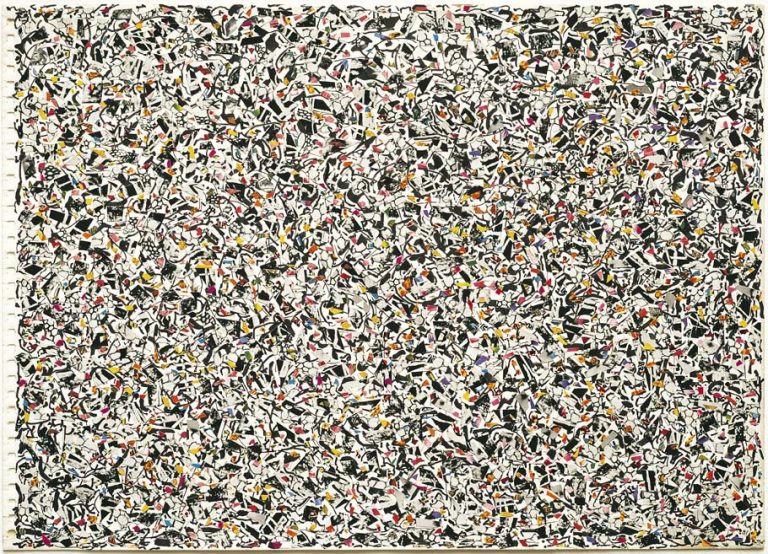We acknowledge the Traditional Owners of the land on which the Queensland Art Gallery | Gallery of Modern Art stands and recognise the creative contribution First Australians make to the art and culture of this country.

Robert Klippel / Australia 1920–2001 / Untitled 1981 / Collage, fibre-tipped pen and ink on wove paper / 30 x 41.8cm / Gift of the Queensland Art Gallery Society 1983 / Collection: Queensland Art Gallery | Gallery of Modern Art / © Andrew Klippel. Courtesy of The Robert Klippel Estate/Copyright Agency 2020
Robert KlippelUntitled 1981
Not Currently on Display
Although well known as a sculptor, Robert Klippel produced thousands of drawings and collages throughout his career. These lesser-known works are closely connected to his sculptural practice, as noted by curator Christopher Chapman:
Klippel’s drawings are entirely experimental in their content and form. It is little known that his sketchbooks included designs for furniture and studies of marine life forms — all of which feed into his work as a sculptor.1
At first, Klippel’s drawings were notations for sculptural ideas; however, over time, they became a space where the artist could explore ideas of form, space and structure. His drawings also allowed him to engage in a dialogue with the major art movements of his time, including Cubism, Surrealism and Constructivism. Klippel’s collages were constructed from coloured paper, cut or torn from printed or painted paper, and feature abstract and expressionist images.
Endnotes:
1 Christopher Chapman, quoted in Carrie Lumby, ‘Robert Klippel: The natural’, Art Collector, July 2002, <artcollector.net.au/robert-klippel-the-natural/>, viewed August 2020.
Robert Klippel is widely recognised for his abstract assemblages made from scrap metal. As a child he was fascinated with model-making and, later, produced models for the Australian Navy during service in the Second World War.
He studied sculpture, mainly wood carving, at the East Sydney Technical College, before moving to London in 1947 where he studied at the Slade School of Fine Art. In London, he regularly visited major museums, making thousands of drawings in order to develop a vocabulary of forms and shapes for his sculptural ideas.
Klippel moved to the United States in 1957 to teach at the Minneapolis School of Art. There, he became increasingly interested in discarded metal and found objects, creating welded constructions from steel-plate, copper and engine parts.
He returned to Australia in 1963 to continue his decades-long exploration of the interplay between the mechanical and the organic in the modern industrial era. Every piece of machinery he uses contributes to the organic nature of his finely resolved constructions, and every element is necessary in making the work complete.
In 1988 Klippel was appointed an Officer of the Order of Australia for his services to art.